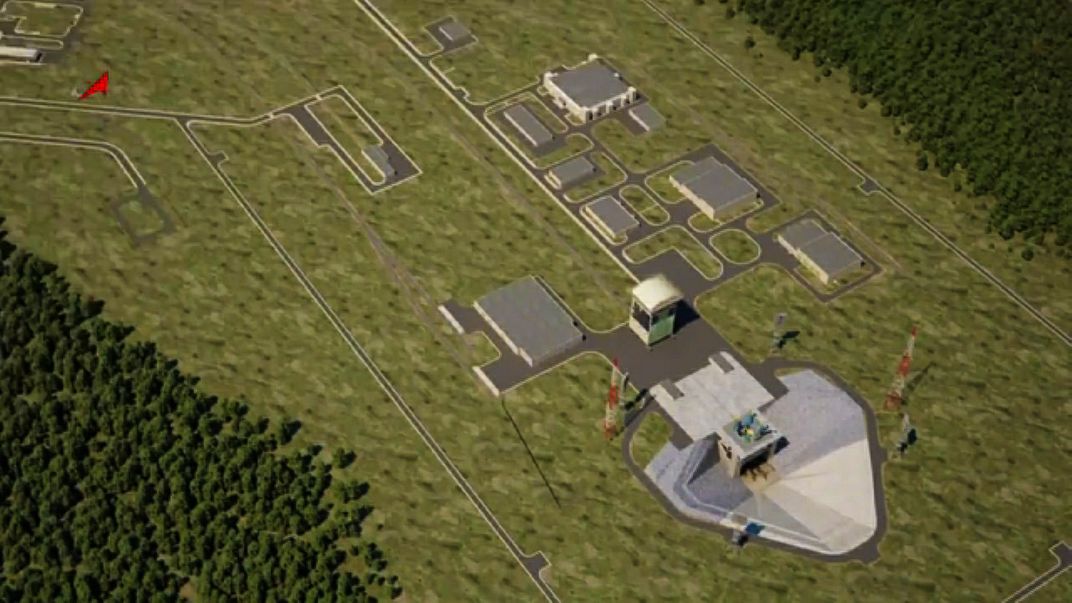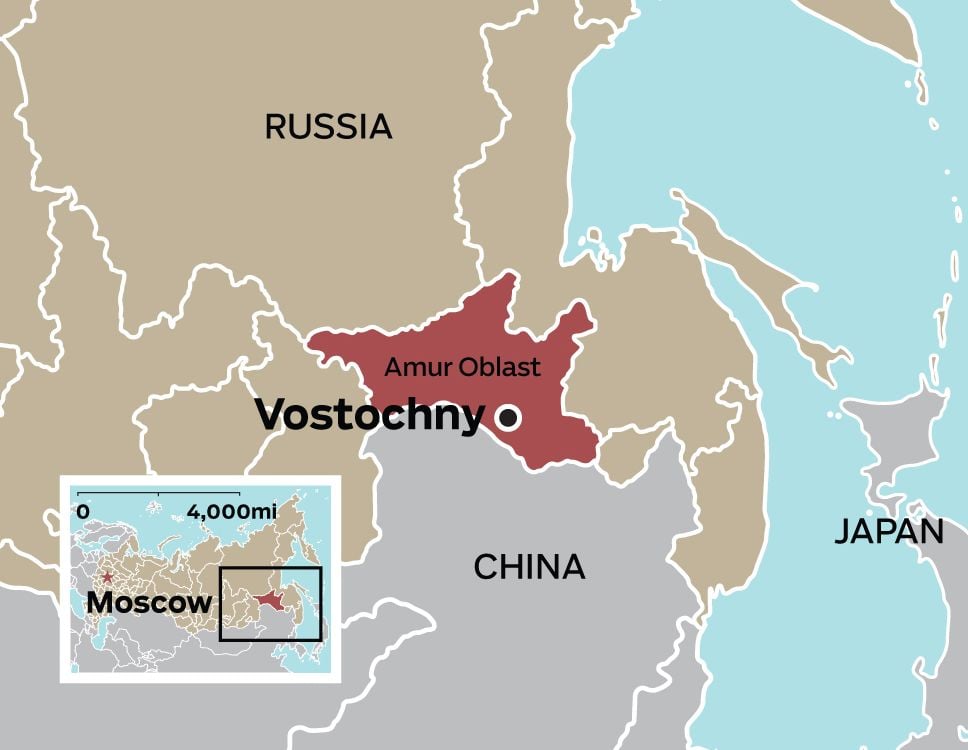The Spaceport in Siberia
Russia is building a rocket launch complex six time zones from Moscow. Will its aerospace industry follow?
/https://tf-cmsv2-smithsonianmag-media.s3.amazonaws.com/filer/2c/c5/2cc5b30f-8db8-4a18-8ead-c708a552a2ef/soyuz_night_launchjpg__1072x500_q85_crop_upscale.jpg)
In the midst of an endless Siberian forest in the Russian far east, 4,000 workers are toiling to build a 21st century version of the historic Baikonur Cosmodrome, where Russia has launched spacecraft since Sputnik. The new launch pad will be finished by the end of next year, and according to official plans, the site, called Vostochny (“Eastern”), will begin launching scientific and military payloads on Soyuz rockets, with manned launches on a new type of rocket to follow perhaps three years later.
Like Baikonur, the new cosmodrome will have its own city, accommodating 30,000 people, an airport, train station, hotels, parks, and schools. But Vostochny will have much more in the way of amenities, including a business center and a complex for training cosmonauts and space tourists. It also will have for its launch pads a mobile, vertical service tower similar to one Russia built in the last decade at the European Space Agency’s Soyuz launch pad in Kourou, French Guiana. The service tower allows sensitive instruments, such as those on science satellites, to be processed at the pad.
At 270 square miles, Vostochny will have a much smaller footprint than Baikonur, which is spread out over 2,593 square miles (slightly larger than the state of Delaware). Unlike in Baikonur, where many miles of Kazakh Steppe separate launch pads, each requiring its own infrastructure, all rockets and spacecraft in Vostochny will be prepared for launch under one roof; the several wings of the single processing center will be connected by a common transfer gallery.
As long as Russia flies the Soyuz, manned launches to the International Space Station will still require Baikonur. Because of the design of its launch escape system, the rocket requires hundreds of miles of open space—such as the grasslands of Kazakhstan—so that its crew capsule can parachute down safely, primarily in case of an emergency after launch. At Vostochny, a manned Soyuz would have to overfly the rugged terrain of the Siberian forest and then the ocean, putting launch aborts at risk and making search-and-rescue missions along that path much more difficult.
For that reason, Russian engineers began working on a next-generation spacecraft, called PTK NP, that could make high-precision, rocket-powered landings into pre-determined spots along the flight path. However, the new capsule is too heavy to be carried by the Soyuz launcher, so a new rocket, Angara, is being modified for the job. The launch pad for Angara won’t be built at Vostochny until 2018, during the cosmodrome’s second phase of construction. If everything goes according to a very optimistic (or, according to some, highly unrealistic) schedule, Angara would lift off from the new cosmodrome for the first time in 2018.
Vostochny owes its existence to the 1991 collapse of the Soviet Union, which left Moscow in the uncomfortable position of having to rent Baikonur—now $115 million a year—from the newly independent republic of Kazakhstan. It wasn’t long before the Russian government vowed to rebuild the strategic spaceport on its own territory. Survey teams from the Russian space agency Roskosmos eyed an old nuclear missile base near the town of Svobodny in the Amur Region, some 478 miles west of the city of Khabarovsk. The base is almost on the same latitude as Baikonur, so rockets could carry the same size payloads as they did when launched from the Kazakh launch pad, and is bounded to the north by hundreds of miles of sparsely populated tundra and to the east by the Pacific Ocean; either is a handy crash site for spent rocket stages.
The choice of Svobodny was determined by orbital mechanics: As is the case with NASA’s Kennedy Space Center, most rockets are launched eastward to take advantage of the momentum Earth’s rotation affords. If a site had been chosen in western Russia, the eastbound rockets would have overflown populated areas. But the Russian economic crisis of the 1990s delayed large-scale development in the far east for almost two decades. When the economy improved in the mid-2000s, the Kremlin decided to act, and in 2007 approved the Vostochny project. Its estimated cost in 2012: $11.5 billion.
Along with freeing its space program from Kazakhstan, Moscow found an even bigger incentive to shift operations to the far east: jobs. “Without doubt, it should...upgrade the industrial base in the region,” Prime Minister Dmitry Medvedev told his cabinet last November, according to Russian media.
Citing security concerns, the Russian government barred using foreign workers in Vostochny, and managers are still scrambling to find bulldozer operators, concrete mixers, and other construction workers. Despite an apparent lack of personnel, low pay, and reported harsh working conditions, the construction workers made visible progress in erecting the concrete structure of a Soyuz launch pad and support facilities in 2012 and 2013.
Besides the Soyuz pad, “we plan two heavy launch facilities in Vostochny,” the head of the Russian space agency, Vladimir Popovkin, told a Russian newspaper last April. “Also, we are thinking about the development of a super-heavy rocket complex [with a payload] from 70 to 130 tons.” According to the agency’s official brochure on Vostochny, the third phase of development at the center, focused on bringing super-heavy rockets to the site, will take place from 2021 to 2030.
President Vladimir Putin alluded to Vostochny’s grand future during his visit last April, when he radioed greetings to the crew of the space station. “I hope very much that it would be used not only by the Russian specialists but also by our colleagues in the United States and Europe,” Putin said.
However, once the center is ready to start launching rockets of any kind, a major challenge looms. Currently, the Russian space industry is mostly concentrated in the western part of the country, in cities like Moscow and Samara. During his December 2013 visit to Vostochny, Vice Prime Minister Dmitry Rogozin summed up the logistic problem: “If our cosmodrome is here in the Amur Region, then why is all our [rocket] industry in the west [of the country]?” It was a politically flipped version of the question: “If our industry is in the west, why did we decide to put a launch site in the east?”
Will each liftoff require hundreds of engineers to commute across Russia’s enormous territory, only to have to cross it again to return to their families and places of work in western Russia? To resolve the dilemma, Russia would have to persuade workers and engineers to relocate. To make Vostochny attractive to young engineers, Moscow promised a super-modern city would rise along with the launch and technical infrastructure of the space center. The government media even claimed that technical personnel who agree to relocate to the center with their families would be provided fully furnished cottages.
“In the east, there are all prospects for the rocket and space industry,” Rogozin says. “Here Russia should spread its space shoulders. We need to do everything possible to attract young specialists here.” It’s a multi-billion-ruble gamble that Russia’s space program can’t afford to lose.
/https://tf-cmsv2-smithsonianmag-media.s3.amazonaws.com/accounts/headshot/AnatolyZak.jpg)


/https://tf-cmsv2-smithsonianmag-media.s3.amazonaws.com/accounts/headshot/AnatolyZak.jpg)